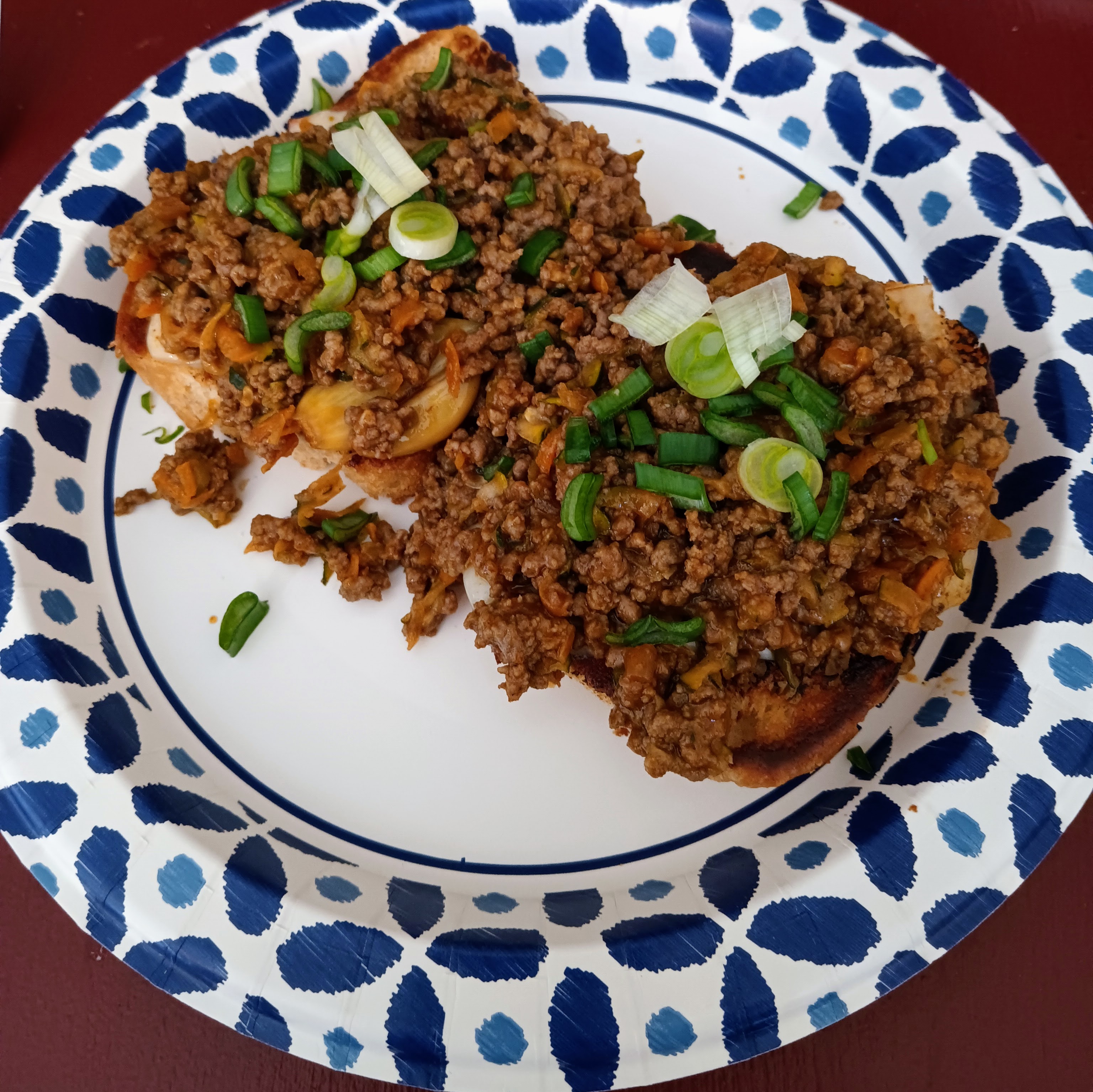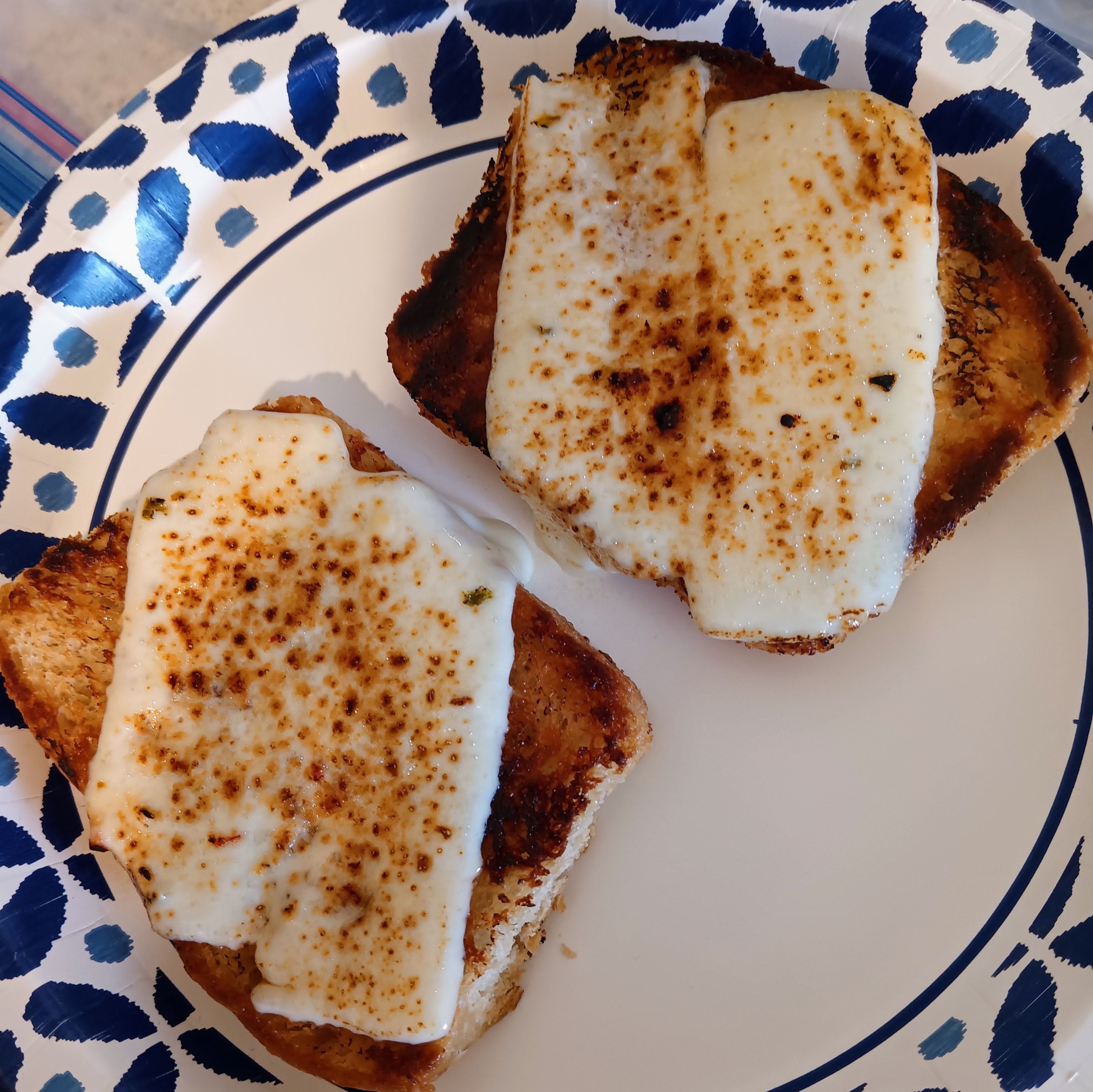Six Lessons from Making Gourmet Sloppy Joes

When my wife says she’s craving sloppy joes, she gets hardcore sloppy joes. I used to make these growing up, not to mention the countless lunches in the school cafeteria. However, this time I brought my years of culinary study into the mix and upgraded this classic American sandwich.
What resulted was a tangy, sweet, aromatic mix of perfectly browned meat eaten open face on fresh, homemade bread that had been toasted in bacon grease. These sandwiches were tear-inducingly good. I think I’ll add them to my list of sandwiches sold out of my imaginary food truck.
I was thinking about it after, and there were several simple techniques I used to pull this recipe together, and I think they’re worth sharing to demonstrate how culinary techniques can combine effectively in the kitchen.
1: Pick Your Fats Wisely
Cooking with heat almost always requires some sort of fat. One of the biggest disservices you can do yourself is to just go for the same cooking spray every time. First off, most of the cooking spray you find is actually profoundly unhealthy and is the first thing I suggest you ax from your diet to improve your health. Check out this article for details. But secondly, fat carries a lot of flavor. In fact, Samin Nosrat (author of Salt, Fat, Acid, Heat) teaches clearly that if you use the wrong fat in your dish, it will never taste right.For the case of these sloppy joes, I wanted a fat that could dress up the otherwise boring ground beef and add a good aroma. Thus, I began by melting some bacon grease that I’d saved from the week before. A close second choice would have been the beef tallow I always have on hand.
2: Measure Your Salt
For the most part, you can salt to taste. In fact, you always should. However, in some foods, you want to salt it before the food is “tastable,” such as when you’re cooking chicken breast tomorrow and decide to salt it today like the intelligent chef you are. I wanted to make sure my meat was nice and well seasoned, so I salted it immediately before throwing it onto the heat.Here’s the rule of thumb: You want a teaspoon of salt for every pound of meat. Hold the teaspoon or pinch the salt in your fingers high up above the meat and sprinkle it liberally across the surface. I’m not sure how much salt you want for the vegetables, but those are much easier to season to taste anyway.
3: Maillardization Matters

Maillardization is the chemical process that foods go through when applied to high heat. It causes proteins in the food to caramelize in a way that dramatically enhances flavor. Theories are that this also increases the bioavailability of nutrients in many of our foods, rendering them more healthful for consumption.
What’s the best way to achieve maillardization? Well, I wrote a whole article on it once upon a time, but here are some general tips:
- Use cooking fat. Oils are able to go much higher in temperature than water can (and foods are full of water). In order to achieve maillardization, you need to reach a higher temperature than plain food would allow.
- Crank the heat. Ideally cooked vegetables will be brown and crunchy / crispy on the outside, but still firm and snappy in the middle (except for root vegetables like potatoes, which should be rendered completely soft when properly cooked). Unfortunately, many of the vegetables we eat were cooked at a more modest temperature that thoroughly softened them to the point of diminishing their flavor and texture, yet wasn’t hot enough to achieve any sort of maillardization. Meat is similar—you want a nice, browned surface because that’s where most of the flavor is.
- Let it rest. Finicky cooks get too afraid of burning their food, so they constantly jumble it around in the pan. As a result, they get cooked—but not caramelized—food. Set your food in that pan, let is siiiiiiiiing to you as that water evaporates and hisses, and only when you’re sure you have a good crust, give it a flip and toss.
I maillardized my sloppy joes in three ways. First, before mincing up my ground beef, I let it sit as one slab on top of the hot bacon grease. After a minute on high heat, the surface of the meat was browned and had a slight crunch to it. At this point I minced the meat with my spatula and incorporated the maillardized bits into the rest of the meat. Second, I toasted some nice bread. Third, I used a culinary torch to not just melt, but to caramelize some pepper jack cheese.
4. Aroma is the Jewel of Flavor
Taste, generally speaking, breaks down into just a few categories: salty, sweet, sour, bitter, and umami (or savory). This is all that your tongue is able to sense. Everything else that you “taste” when eating is actually aroma sensed by your nose, and there are hundreds of thousands of different scents out there, not just five. The combination of aroma and taste are what constitute flavor.An unfortunate mistake we sometimes make when cooking is we get so fixated on a taste we crave that we forget about all the aroma we could add. America in particular has a problem with overemphasizing sweetness and fattiness in our food.
While the five basic tastes are absolutely essential, they are not everything. Properly incorporating aromatics is a surefire way to ramp up the perceived flavor of your food. Another way of saying this is that vegetables aren’t just for health freaks, they’re also for people who love to make incredible food.
A good example of incorporating aroma into your food is this article about mirepoix.
In the case of these sloppy joes, I finely grated carrots, onions and garlic as an aromatic base to build the rest of the meal on. I also garnished the final product with home-grown green onions and fresh-ground black pepper. The final product carried all the characteristic acidic sweetness of classic sloppy joes, but my wife and I couldn’t stop eating because of all the pure flavor brought by the different aromatic ingredients.
5. Nothing Beats Homemade
I’ll be honest: I never would have done this of my own accord, but my wife has been making a lot of bread lately, which means instead of serving these sloppy joes on dry buns, we had them on fresh, moist, incredibly indulgent homemade white bread. I don’t know if I can ever have a regular sloppy joe again.On top of that though, I never buy barbecue sauce. Good barbecue sauce is full-on magic, so I always make my own. I stewed these sloppy joes in my Kitchen Sink Sauce.
The point is the more things you can make on your own, the more you’ll upgrade your cooking and hold some serious mystical powers over whoever gets blessed by your dinner table. This is why the bulk of my cooking is merely making garnishes and sides to adorn my weeknight dinners. My fridge is full of sauces, pickles, fermented foods, and other goodies I use to improvise meals throughout the week.
6. Balance Fresh Ingredients with Heat-Treated Ingredients
Cooking has a way of homogenizing flavor and softening texture. This is important for creating harmony in our dishes as well as making them, you know, edible. But raw ingredients retain their sharpness of flavor and texture, which can perfectly accentuate a meal. Whether it be fresh basil on a pizza, pickled onions on a taco, or in this case, fresh green onions and cracked pepper on sloppy joes, fresh ingredients can really bring a meal to life.Fresh ingredients also often serve as palate cleansers. Strong foods can quickly become cloying, but fresh ingredients cut through all of that and keep us interested in a good meal.
Sooo are You Gonna Share a Recipe or What?
Actually, not this time. I really wanted to share the recipe, but I actually think it would defeat the purpose of this article. Instead, I encourage you to go create your own incredible sloppy joe and tell me about it in the comments. I’ll be here waiting! Matthew Christensen
Matthew Christensen
Weekly Newsletter Contributor since 2023
Email the author! matthew@dvo.com
